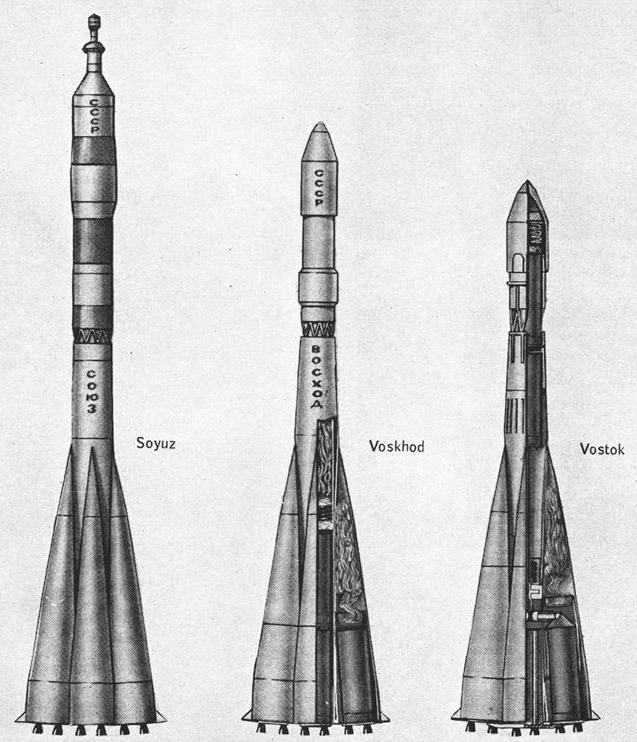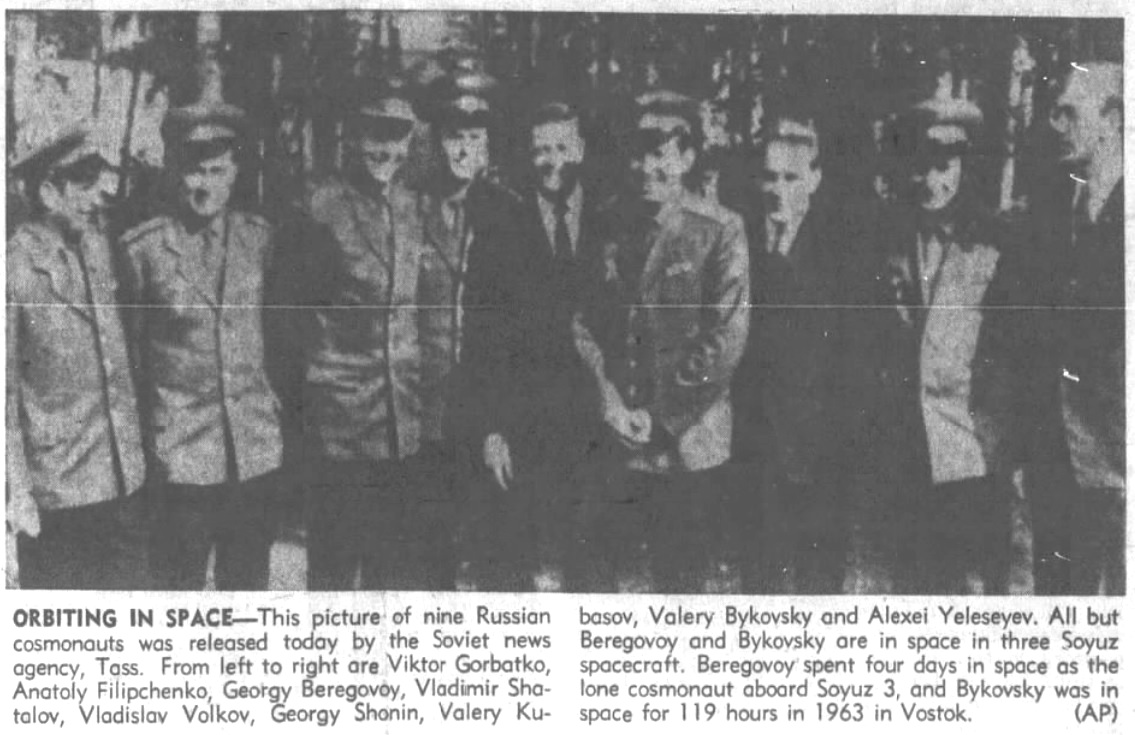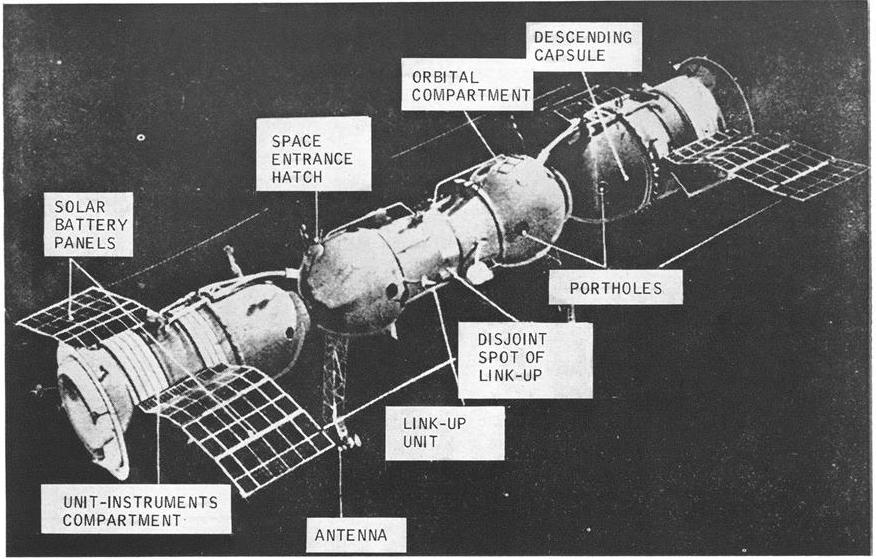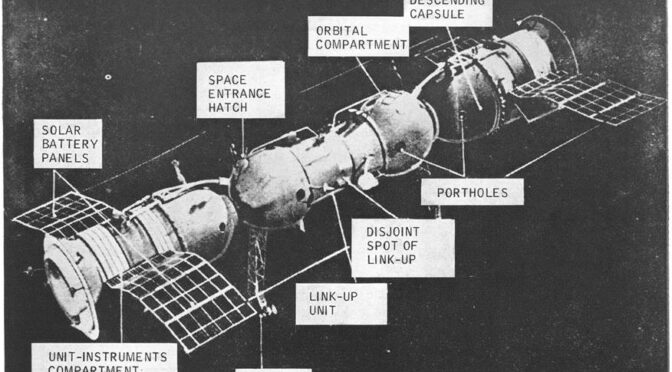
by Gideon Marcus
(Un?)Lucky Seven
In 1959, NASA unveiled the identities of the first seven astronauts—the folks who would fly the Mercury capsule into space. Over the course of two years, from 1961-1963, six of them rode a pillar of flame beyond the Earth's atmosphere, one at a time.
This month, the Soviets orbited seven cosmonauts at once.
Like Sputnik, this momentous occasion was not exactly a surprise. Indeed, since late August, the USSR had put out releases to the effect that cosmonauts would be taking to the skies in record numbers. The mission started innocuously enough with the launch of Soyuz 6 on October 11 carrying cosmonauts Shonin and Kubasov on their first flight. Significantly, their flight plan included "experiments…on the methods of welding of metals in a high vacuum and in the state of weightlessness." Such techniques have application in the development of orbital space stations, the next inevitable phase in space development.

Comparison of the Soyuz booster compared to the ones that launched the Voskhod and Vostok capsules
The next day, Soyuz 7 blasted off with cosmonauts Filipchenko, Volkov, and Gorbatko—like the Soyuz 6 crew, all rookies. Given the prior Soviet announcements, the successful previous flight and docking of Soyuz 4 and 5, and the maneuvers made by Soyuz 6 on its first day in orbit, the launch of Soyuz 7 was no surprise. In fact, cosmonauts in both crews had been the back-ups for the cosmonauts on Soyuz 4/5. It seemed a second docking/impromptu space station mission was in the works. But was that the plan?
Apparently not, for the next day, yet another Soyuz was launched, this time carrying veterans Shatalov and Yeliseyev, who had actually flown on the last Soyuz mission. By the 15th, all three spacecraft were in sight of each other. The stage was set.

And then…
The next day, Soyuz 6 crew did do their welding experiments and then landed. On the 17th, Soyuz 7 returned to Earth. Soyuz 8 followed on the 18th. Though all of the spacecraft jockeyed around each other while in each other's vicinity, no docking was made or, per the Soviets, even attempted!
Can we buy that there was no docking plan at all? We know from Soyuz 4/5 that adding a docking adapter to the basic Soyuz design means extra weight for the spacecraft. Soyuz 6, with its "Vulkan" experiment package in the forward science module (that spherical bit ahead of the command module, where the crew sits during take-off and reentry) probably couldn't carry anything more. But Soyuz 7 and 8 could have, and given their particular crews, it sure seemed like a docking was in the offing.

An ad hoc space station based on an illustration released by the Soviets—was this what was supposed to have happened?
The actual mission of the three spacecraft is anyone's guess at this point. Certainly, the coordination of three crews in orbit is a big deal in and of itself, so maybe that was the point. The knowledge gained from the flight of the three Soyuz will be valuable both in the future construction of a space station and also when/if the Soviets decide to try for their own lunar mission (though, if they need three craft to go to the Moon, that suggests their rockets aren't as big as our Saturn V, necessitating more launches0.
But given that the Soviets love their space spectaculars, and we just had the biggest one of all this summer, with a repeat set for next month, I'd bet rubles to borscht that the Russkies had planned something more dramatic than playing orbital footsie.
I guess we'll see come Soyuz 9/10/11!



